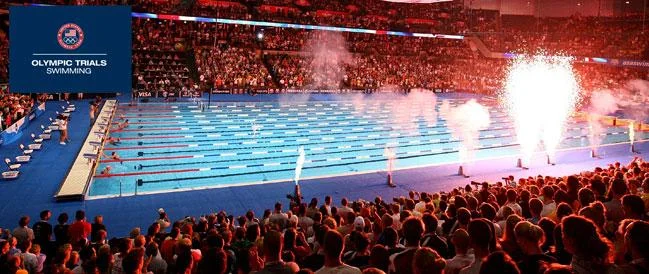Last week we broke down how the men’s USA Swimming Olympic Trials time standards have evolved over the last 20 years (catch up HERE). This week we will take a look at how the women’s standards have changed over that same period.
HERE IS THE RAW DATA AND SOME BASIC ANALYSIS, ORGANIZED BY EVENT LIST…
NOW HERE IT IS AGAIN, REORGANIZED BY PERCENTAGE CHANGE…
Top event being the one with the greatest change in the time standard over time, bottom of the list if the cuts that have remained more stable.
“Let’s break it down... again”
Worth considering: as we try to pull some general analysis from the trials cuts data, please consider the likelihood that this analysis will not illuminate the whole picture of performance evolution. In a future post, it might be interesting to analyze the results across the top percentage of performances AT trials.
To recap: in last week’s post we noted the clear relative stability in the freestyle distance events; those events have undergone the least significant change over over the last 20 year. We broke down a number of theories as to why this might be happening.
After considering some popular musings, we eventually theorized that the largest effect on the time standards was caused by two macro changes in the sport, 1) the rise and ubiquity of underwater dolphin kicking, and 2) the internet’s effect on how coaches can learn and apply high level technique more quickly than in the past. We will review our reasoning below, but first let’s compare the women and men.
Women v. Men
We did not find much statistically significant difference between the men’s and women’s cuts relative to events, however, on the whole, the women’s cuts have improved much more than the men. Let’s compare.
Gold highlight shows more improvement than the equivalent event on the other side.
Why has this happened? Let’s take a Swing:
I regrettably don’t have a great idea what accounts for this trend and more testing would be necessary to nail down a reason but here are a few (perhaps ill fated) hypothesis:
Strength Training
Much like many theories related to this post, I was not able to find statistics on the number or percentage of women who lift weights. However, my hunch is that the percentage of women strength training has increased quite a bit over the last 20 years- perhaps this has an effect. Peruse the hashtag #womenwholift on instagram and you will find a whole community of women working to make strength training more accessible to women around the world.
Women in Swimming
Traditionally there have been more women than men in American swimming. However, over the last 20 years the gap has closed quite a bit. Nevertheless, according to USA swimming data, the sport is still roughly 56% women. Perhaps the larger number of women in the sport can account for the difference, however the percentage of men in the sport has grown more than women over the same time frame (shrugs shoulders).
NCAA Programs
The number of college swimming program’s being cut thanks to budgetary circumstances is disheartening. Regrettably, I was not able to find clear statistics on the number of women’s programs cut v. the number of men’s program that were dismissed over the last 20 years: perhaps there is something to mine here for later discussion… I’ll keep working on it.
In terms of improvement by event a similar logic can be applied to the changes in the women’s time standards that we applied to the men’s last week:
Dolphin Kick Changes the Game
Three of the top four most changing cuts, were all events that would be deeply and directly affected by the rise in underwater dolphin kicking (100 Back, 100 Fly and 200 Back). From last week’s post… “Huge improvements in these events over the last 20 years appear to be easily explained by the pervasiveness of underwater dolphin kicking. Of course, other factors play a role in these race’s evolutions, but they all pale in comparison to a swimmer consistently pushing their walls out 15 meters.”
100 BREASTSTROKE
From a technique perspective, it is reasonable to make the argument that breaststroke has undergone the greatest changes over the last 20-30 years. We took a deep dive into this concept in a previous post (a note on breaststroke kick and lines). Modern sprint breaststrokers tend to swim with a higher tempo and more power, which is the primary reason for the drop in times here.
What did we miss? Let me know below!
Thanks for checking us out!
Jeff Gross,
Founder, techniqgroup.com
Get yours now: HERE






